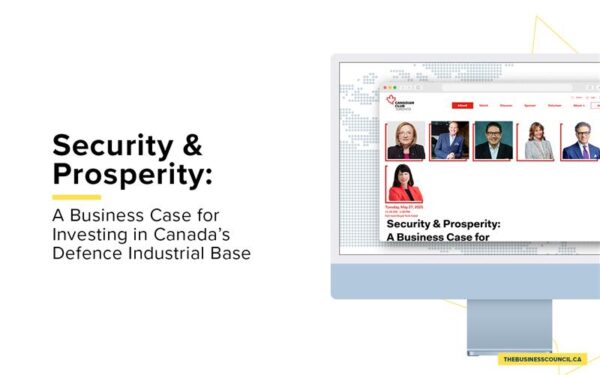We have flattened the curve, now what?
Originally published in The Globe and Mail.
Linda S. Hasenfratz is chief executive officer of Linamar Corp.
Donald R. Lindsay is president and chief executive officer of Teck Resources Ltd.
Galen G. Weston is executive chairman of Loblaw Companies Ltd.
Canadians should be proud that their vigilance and sacrifice have helped blunt the rise of COVID-19, and of the responsiveness of our provincial and federal governments in managing the crisis. Except for a few health districts, the country is seeing new case growth significantly below the levels that triggered the countrywide lockdowns in March. Canadians should now be looking to restart their lives and get back to work.
However, many lack the confidence needed to return to school, to work and to running our businesses. It is crucial that we focus on building the confidence that our workplaces are safe, that we will get through the situation economically, that the isolation and lockdowns will end, and that life slowly but surely will move forward.
Confidence is at the core of a successful next phase as we all learn to live with the virus.
Governments need to work hard now at re-building Canadians’ confidence regardless of how long we have to wait for a vaccine to be widely available. That means reinforcing the sense that we are returning to a semblance of normalcy where we don’t need daily updates. It means sending positive messages on progress made, and highlighting the successful return-to-work protocols many companies are employing to keep people safe.
Building confidence is the first step.
Next, the country needs to scale up an effective virus testing and tracing infrastructure to identify and deal with new infections. That effectiveness varies widely. In some parts of the country, every new case can be traced to its origin. Contacts of each person who receives a positive diagnosis are traced and isolated and regularly tested to ensure further transmission is halted. In regions more overwhelmed by cases, results may not even be reported in an efficient manner to the person tested.
Now that the federal government has committed $14-billion to support reopening, all the provinces should develop and commit to a shared national framework and standards for testing and tracing.
Testing must be for the presence of the virus, and, as soon as feasible, for antibodies. Testing must also be done in an easily accessible, low-risk way to reach the most Canadians. This national framework should also include commitments to maximum data transparency, so Canadians and our companies have the information they need to make decisions confidently.
This approach will ensure that all coronavirus infections will be identified, isolated and traced with speed and resolve. We need this now and we will need it to fight the next wave, should it happen.
In practice, that means:
- A bold shift towards universal testing as the overarching goal, without too many constraints and restrictions
- Tests deployed rationally across health care workers, symptomatic patients, contacts, high-risk workers and the general population
- Tests delivered flexibly and conveniently in a range of locations. This might be in the workplace or the local drugstore, for instance. Think of how easy it is to get a flu shot
- An acceleration of the efforts to meet our needs for testing supplies for the next 12 months (swabs, reagents, masks, PPE)
- A national tracing program that uses digital tools, human tracers and a new virus-data infrastructure
- Accelerated investigation into the potential of reliable and widely available antibody testing, given that it might confer the presumption of immunity to the virus on some people
Without a cross-country effort, a future resurgence of the virus could require more broad-based lockdowns rather than localized and targeted responses. That would be very damaging for our confidence and the economy, and we must ensure we don’t need to take that path again.
In parallel, Canadians need economic support programs that provide both a safety net and, importantly, an incentive to work. We commend our provincial and federal governments for deploying rapid economic support measures at unprecedented scale. This truly prevented severe hardship for millions of Canadians. Many people want to get back to work, and these programs need to be adjusted to ensure both an effective safety net and an incentive to work:
- The crisis revealed major gaps in the Employment Insurance safety net (e.g. the self-employed, gig workers, employees with childcare and family health needs). The Canada Emergency Response Benefit (CERB), the wage subsidy, and other programs were effective in mitigating the impact
- However, the current policies aren’t sustainable: CERB is extremely expensive, and companies across industries are finding it difficult to restart if employees lack incentives to return
- Adjusting the program is more complicated than it seems, the policy design issues are genuinely intricate, but adjusting CERB and other programs to be more targeted and provide greater incentives to work is crucial. Employers clearly have a key role along with governments. There is scope here for fresh ideas and new thinking.
In the first several weeks of COVID-19 measures, Canadians watched with respect how countries like South Korea and Germany flattened their curves. We are now three months into a lockdown, and for this next phase, Canadians will expect their government and business leaders to work together and raise our game. If we do it right, those same countries might start benchmarking us. For that to happen, Canadian governments and businesses have to deliver on this plan – restore confidence, establish testing and tracing at scale, and establish effective programs to draw people back to work.











